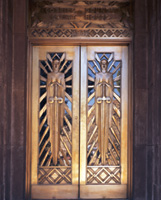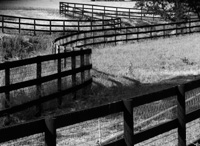Epson's New Stylus Pro 4000
The Biggest And Maybe The Best Desktop Photo Printer Yet
For much of the 15 years I have been involved with the digital darkroom, the pace of progress has been set by what Seiko/Epson R&D has brought to us in photographic ink jet printers. Now, the 16x20 print size, that has been for most of us the measure of serious photography, is accessible in a desktop photo ink jet printer. In fact, the print size output from the Stylus Pro 4000 is a bit more--17x22". |
|||
Epson has not just brought
us the biggest desktop ink jet, it has improved and refined even more
on their Pro line of printers using archival UltraChrome inks. One feature
that users of the Epson Stylus Photo 2200 will appreciate is that the
Stylus Pro 4000 has eight ink cartridges, with both Photo and Matte Black
inks, so when media selection is switched from resin to fiber-based papers
the printer automatically selects the correct black ink. Also new is the
1" wide print head, which helps make printing speed 1.9 times faster
than any previous Pro Epson model. In addition, the 17" wide Stylus
Pro 4000 provides convenient, easy paper handling to accommodate all media,
whether in cut sheets or on rolls. The paper tray will hold and feed cut
sheets up to 17x22", or roll paper up to 17" wide, plus there
is a front loading single sheet paper feeder. |
|||
Testing And Printing
With Epson's New Stylus Pro 4000 |
|||
The reason I was so adamant
about printing 16x20" images on 17x22" paper with the 4000
for my evaluation is that making the largest print size makes apparent
any possible shortcomings in image quality. I used Epson's Premium
Semimatte Photo Paper to assess the accuracy of the new profiles that
are supplied with the printer. I also had some Epson fiber papers like
Enhanced Matte in smaller size stock to do the same thing and to provide
color match comparisons with both the Moab Entrada and Premier papers
I used for testing. Both of these papers yielded good monitor image matching
by using the Epson Enhanced Matte profile. And when I compared results
with prints made with the Stylus Pro 4000 on Epson Enhanced Matte Paper
I was quite pleased. As I continued to test, however, I found that the
Epson Watercolor paper profile was more effective with the Premier Fine
Art paper for reproducing portraits and similar people pictures. Monochrome Results |
|||
Evaluation And Recommendation Technical Specifications |
- Log in or register to post comments






































